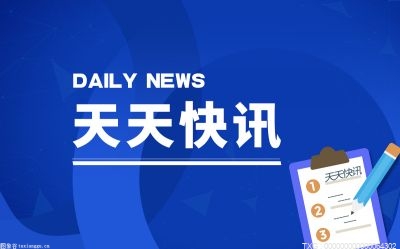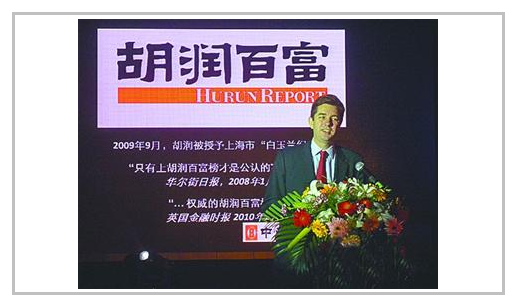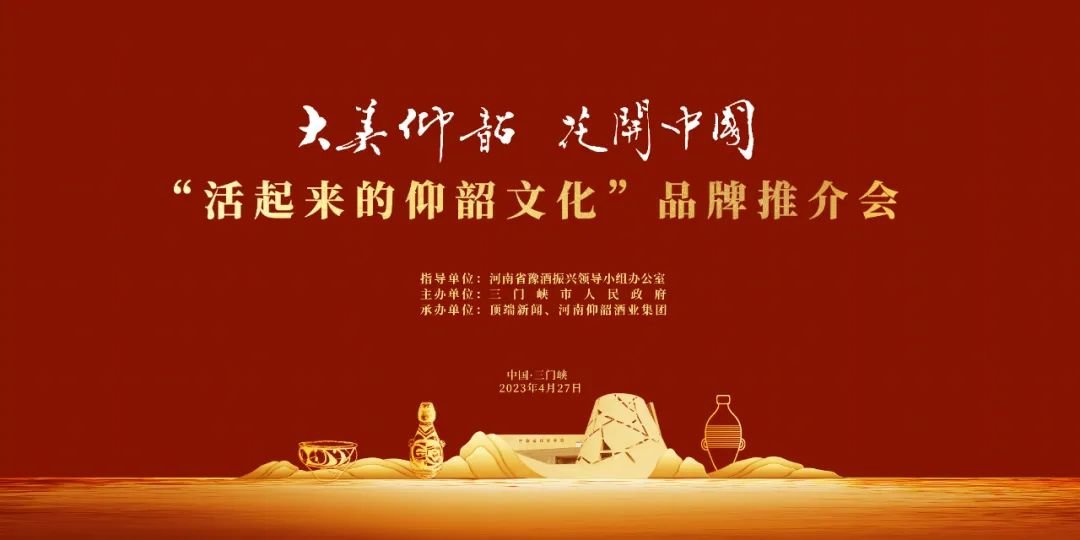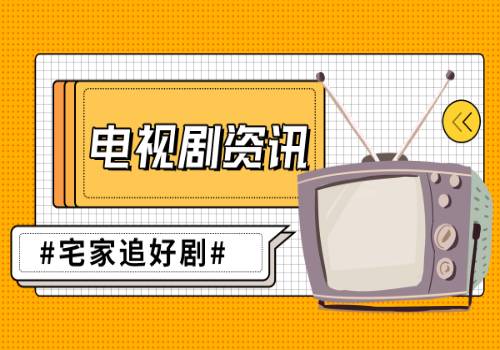幼儿园与小学,存在着外在环境、教学内容、时间安排等各处不同,孩子抑或家长都将迎来全新的挑战。
 (相关资料图)
(相关资料图)
作为九年义务教育的开端,小学低年级的过渡显得尤为重要。怎样的课程安排,能帮助孩子塑造良好的思维习惯基础?怎样的教学环境,能让孩子从幼儿园的状态中平滑升级?
我们特此采访了小学部的班主任、英语和计算机的学科老师,解答一些疑问,也为大家呈现狄邦华曜在幼升小阶段的变化与适应、学术与课程安排、双语环境等最新的内容。
Swipe left for English→
There are various differences between preschool and elementary school, such as external environment, teaching content, and scheduling, which will bring new challenges for children and parents alike.
As the beginning of compulsory education for nine years, the transition of the lower grades of elementary school is particularly important. What kind of curriculum can help children develop a good foundation of thinking habits? What kind of teaching environment can smooth the transition from preschool?
We interviewed the Homeroom teachers, English and computer subject teachers of the Elementary School div to answer some questions and present the latest content on the changes and adaptations, academic and curriculum arrangements, bilingual environment of Dipont Hauyao Collegiate School during the transition from Preschool to Elementary school.
←向右滑动查看中文
Miley
一年级
班主任
语文老师
Nick
一年级
班主任
英文老师
Suren
小学部
艺术与科技学科组长计算机信息技术老师
Miley
G1 Homeroom Teacher
Nick
G1 Homeroom Teacher
Suren
ES ICS Teacher
More
Explore our Grade 1
探访我们的一年级
1
迎接变化:
全面引导,逐步过渡
····
····
····
与幼儿园相比,进入小学的学者们将面临着诸多的变化。
学习时间
- 幼儿园8:30到校,下午3:30放学,期间包括午休;小学部则为上午7:55开始入校,下午16:30放学。
- 小学的一天包括每天7节课,每节课40分钟,每两节课之间会穿插一次Break,但不再有午睡环节。15:00,学术课程结束。
- 每周一到周四在15:30-16:30,小学会提供几十门不同内容的延展课程供学者们选择,例如英语创意写作、科学实验室、体操、游泳、全装备美式橄榄球、折纸艺术、油画、音乐等。
学习场所
幼儿园班均人数相对较少,场地相对独立;小学则涵盖年级更广,每天学习活动的场所更多,场地更大。老师会在开学初带领小学者们了解学校各处的设备及动线,方便使用洗手间、饮水机等,在不同课程走班时能顺利找到目标地;同时协助孩子们建立在校园内和其他年级学者共处的心理素质。
教育方式
幼儿园保教一体,老师和助教会时刻关注孩子们,帮忙解决日常问题;小学的教师对生活方面照顾较少,更侧重于学习与品德的教育,对于孩子的自理能力有更高的要求。从入学第一个学期开始,老师会根据情况,关注学者们对于衣物的保管、书包的整理等事宜,以培养大家的良好习惯。
学习内容
幼儿园的学习不涉及明确的学科概念;小学正式开始分科学习,每门课都有专业的学科老师,并且要完成学习任务和阶段评估等。小学低年级的老师会通过布置非书面类的作业,帮助孩子们形成任务意识;同时鼓励小朋友们进行课外阅读、亲子阅读,强化自主阅读的能力。
为了让小学者们能在多重的变化中自然过渡,保持好学习的节奏,我们在科学规范的时间框架下,充分穿插游戏体验和休息的机会。
小学的到校后即为晨会环节。每日晨会事宜略有不同,一般会让小学者们聊聊前一晚发生的事和感想,同时和老师一起了解当天的日程及特殊活动,并开展一些游戏内容让孩子们轻松进入当天的学习。
小学部的中文班主任Miley老师分享说:“我们会根据最近的课题,安排相关联的游戏。例如现在是入春时节,就会提出植物种植的计划,包括后续的修剪、打理等;或是与心理部门的老师联动,带领小朋友们制作情绪风铃,把害怕或伤心的情绪写进瓶中挂起来,随着悦耳的风铃声,让负面情绪乘风而去。”
课间的休息时间同样有相应的安排,不浪费每个碎片化的时间。我们会以年级为单位,将不同班级的小学者们共同调动起来,组织户外的活动。孩子们可以通过游戏以及与其他人相处玩耍,在课与课之间调节心情,保持积极的状态。”
在整体作息的设定上,我们充分考量到小学阶段孩子们的生理及心理,既利用好每一刻的在校时间,又让学者们能处于松紧有度的、安全愉快的环境之中,实现适应与成长。
2
学术培养:
好奇心,自信心,创造力
····
····
····
在学术与兴趣层面,狄邦华曜从课程设置、教学方式、作业和评估系统三方面为小学者们的个性及全面发展保驾护航。
课程设置
进入小学后,课程分类明晰,我们以中国的课程大纲为本,开设语文、中文数学、英文数学、英语、科学、计算机信息技术、舞蹈、艺术等科目。
一般高年级才会设置的ICS(计算机信息技术)课程,在小学一年级的课表上就可以看到。通过教师的引导,让小学者们有机会在更早的阶段接触信息技术、机器人编程、3C产品等知识。
人工智能时代已到,我们与多媒体的环境分不开关系。ICS的基础教学,例如不插电编程,Scratch编程等,不仅能帮助孩子们以兴趣为导向,从小开拓对于计算机的认知,同时能够在低龄阶段培养实证思维、逻辑思维和计算思维等各学科通用的思维能力。
与此同时,顾虑到孩子们的全面发展,在基础学科之余,音、体、美的学习也以更细化的方式开设给小学者们,如音乐课,除了乐理、乐器学习外,还有Performing Arts、Drama、Dance Class等方面的教学。让孩子们在艺术素养、语言能力和公共表达方面得到多维提升,并通过自我的探索,发现兴趣与热爱所在。
教学方式
iSTEAM-PBL(跨学科项目制学习)是贯穿学校全学段的特色教学方式。跨学科老师共同设计结构化的主题探究项目,结合现实课题,融汇多门学科,让学者们在参与过程中同时掌握语言、科学、艺术、表达等多维知识,了解不同学科在实际问题中的应用方式。
在小学阶段,各学科中外教会共同备课,带领小学者们在同一主题下,进行跨学科、多角度的深挖,同时充分调动大家的能动性,手脑并用,不仅记住知识,还能通过实践得到各项重要能力素养的锻炼。
以“动物”为例,在教学规划时,各科会紧密结合这一主题,开展相应的课堂内容。小朋友们会制作动物名牌,在中文或英文课中,介绍自己设计的名牌及动物的来源和生活习惯;在科学课程中,会了解和探讨一些动物的外形、构造、生物历史;在表演课中,会学习动物有关的歌曲……
当在课上了解到濒危物种时,随着对于灭绝原因和保护方式的讨论,推出环保袋制作的Project。学者们将自己对于拯救濒危动物的思考,融入设计之中。完成设计后,会邀请大家进行投票,高票作品会被实际批量印制出来,给到学者们使用。真正将“环保”的理念吸收,并贯彻到行动之中。
iSTEAM-PBL之余,各学科的教师也会从不同方面创新教学方式。
例如每周语文课另有项目安排,学者们根据布置的主题完成创作,包括但不限于艺术海报、手工灯笼等等;英语课老师会鼓励学者充分利用平台资源,如阅读书目丰富的MyON、提供趣味练习题的IXL等,利用课余时间进行自我拓展。
除了教室内,很多课堂还会在室外展开。老师们会带领小学者们走到户外,通过工具或实验,感受自然中所蕴含的神奇现象和科学道理。
作业与评估
作业与评估,是知识巩固和阶段性学习成果验收的重要方面。在狄邦华曜,我们区别于传统做法,采用了各种灵活有趣的方式来进行。
Miley老师和我们分享,在语文课上,她和助教会将每天的听写词语环节,改成“闯关”的形式,在小朋友们的意识里植入“学习像游戏一样”的感觉;或是通过Popcorn Reading的阅读接力,在保证孩子们学习的兴趣的同时,提升他们对于课本内容的专注力,收获更加沉浸式的阅读体验。
语文组会定期组织“故事比赛”,小学者们将阅读过的故事重新叙述,达成词汇的记忆和积累。孩子每天回家和父母分享学校的阅读,在做的小项目;在家长的陪伴、倾听以及每周项目制学习的参与下,将所学融会贯通。
低年级的孩子放学后并没有太多书面作业,重复的抄写和背诵不仅低效,且有可能磨灭孩子对学习的兴趣。取而代之的是更具综合性的项目制作品呈现。
小学的评估同样加入了趣味元素。例如设置听、说、读、写不同的站点进行考核打卡;或是模拟记者采访的形式来测试小学者们的口语水平等。
各种灵活的评测方法,让孩子从进入学校开始,就对学习产生兴趣,对知识产生好奇。从教育的被动接受中解放。
3
双语学习:
沉浸式的语言环境
····
····
····
双语教学是狄邦华曜教学的一大重点,我们希望学者们通过环境的浸润,形成双语思维,打通语言的内在逻辑,能够时刻在不同的语境中自然流畅地表达。
在打造沉浸式双语体验上,一是从小学至初高中,各学科均使用两种语言对学术内容进行教授,包括音、体、美、戏剧等活动都有外教的参与,其整体的中英文授课比例将会保持1:1的平衡状态;
二是中外教会同时备课,数学、科学等课目均有专门的英语课程。英文学科老师会根据中文课程进度,结合美国等西方国家的教程进行补充,除了词汇之外,在问题解决、内在逻辑等方面都进行了强化。
因为小朋友们在幼儿园时接触英文的程度不同,针对不同背景和基础的学者,我们将英文学习分为三个不同维度的Flexible Learning Group:FLG1 Emerging, FLG2 Expected and FLG3 Exceeded,可以根据自己的情况,去选择适合的分组,更好地融入到语言学习的进度之中。
中文学习同样如此。除了整体的分级选择,在组内也会给予每个学者个性化的关怀。
“哪怕是在同一个 level 里面,小朋友们识字量、阅读能力还是会有差别,我们会让孩子们尝试Peer Work,鼓励他们通过小组的互动,跟同龄人互相学习。”
教学过程中,从低年级到高年级,选取教材逐步递进。小学第一学期处于过渡期,会选择以图片为主、文字为辅的绘本;到了下半学期,开始使用图片和文字各占一半比例的读物;再接下来随着拼音学习的完成,升级到阅读文字带有拼音的书。
为了强调语言学习中阅读的重要性,老师每周都会带学生去图书馆,利用丰富的资源,开展阅读课。阅读由课内篇目、课外篇目以及整本书阅读构建而成,输入与输出同步练习,以读促说,以说带读。在小学将阅读的习惯全方位地培养起来。
日常习惯了双语的输入,会逐渐印记反应在学者的输出中。学者们在Project中制作的作品,很多文案或标语都以中英双语的形式出现;他们在课堂的任务反馈时,也会通过双语来进行阐述和表达。
4
正面管教:
身体力行,“教书”亦是“育人”
····
····
····
除了语言,在成长为人的其他方面,也同样注重环境带来的影响力。
面对刚刚进入“大社区”的学者们,狄邦华曜的教师们普遍倾向于“正面管教”,以包容、积极、尊重的态度去迎接他们。一边用心培养孩子们的规则意识,一边充分给予他们分享个人想法和观点的空间和自信。同时鼓励孩子们使用“Positive Thinking”,从积极的方向去多做思考。
Miley作为中文老师,格外清楚语言所具备的力量。因此她非常重视班级的整体氛围和孩子们的表达态度。她会尽量避免消极的用词,也会注重小朋友们的语言习惯。
通过以平等的方式与每一位学者进行交流,让他们在潜移默化中,也以同样的态度去对待他人。
“我们希望创造有爱的班级,在这里让小朋友们懂得尊重别人,懂得众生平等。无论他人的身份、地位、经济条件如何,采取的态度都应该是平等的。得到帮助说谢谢,造成麻烦说对不起,这是基本的待人礼貌和品质。”
对于刚刚进入小学的小朋友们来说,像是外套弄丢、没有及时扔垃圾之类的事情时有发生。当发现问题时,老师们第一步不是批评,而是定时定点地去提醒,去平和地告诉大家问题所在,让学者们能在和谐的环境中,慢慢养成好的行为习惯,能够自己知道如何解决相似的问题。
小学的规范变多,并不只是为了进行“约束”,而是为将来学者们离开校园、进入其他社会场域之中提前做好准备。孩子越早地去了解规则的意义,在这一体系中去磨练性格、品德、为人处世的方式,是很重要的。
小学低龄阶段的教育工作,涉及细枝末节,对耐心有很大的要求,可能某些问题反复出现,需要老师持续不懈地重申、提醒。但在这个阶段之后,当习惯真正养成了之后,对孩子来说会受益终身。
小学一年级目前所有的设置,代表着我们对于12年一贯制起点的期待。这既是诸多特色教学方式的开始,也是为孩子们打下夯实基础的必备条件。我们希望能从一年级起,看到小学者们汲取能量,茁壮成长,不断进化。
Swipe left for English
1
Facing Changes:
Comprehensive guidance and gradual transition
····
····
····
Compared to Preschool, scholars who enter Elementary School will face many changes.
Learning time
- The arrival time for Preschool scholars is 08:30 and the dismissal time is 15:30. And there is a nap time each afternoon. For the Primary School, the arrival time is 07:55 and the dismissal time is 16:30.
- The elementary school day consists of 7 classes per day, each class is 40 minutes. A Break is interspersed between every two classes, but there is no longer a nap session. 15:00, the academic blocks ends.
- Every Monday through Thursday from 15:30-16:30 (Life Block), the elementary school offers dozens of extra-curriclums for scholars to choose from, such as English creative writing, science lab, gymnastics, swimming, full equipment American football, origami art, oil painting, music, and more.
Learning environment
The average class size in Preschool is relatively small and the space for teaching activities is relatively separate. Elementary school covers a wider range of grades, has larger facilities, and has a more disciplined and regulated environment. Teachers will guide ES scholars to understand the equipment and movement routes around the school, making it easier for them to use restrooms, water fountains, etc. and find their target destinations during different class sessions. At the same time, teachers also help scholars establish psychological qualities for coexisting with other grade-level scholars on campus.
Teaching style
Preschool combines education with childcare, teachers and assistants pay close attention to the children and help solve daily problems. Elementary school teachers pay less attention to daily life and focus more on education in learning and morality, with higher expectations for scholars" self-care abilities. From the first semester, teachers will pay attention to matters such as clothing storage and backpack organization based on the situation to cultivate good habits among scholars.
Learning Content
In preschool, learning is mainly focused on play and interest development, without clear subject concepts. Formal subject-specific learning begins in elementary school, where each subject has its own specialized teacher, and scholars are required to complete learning tasks and tests, which can create certain academic pressure. Teachers in the lower grades of elementary school assign non-written homework to help children develop a sense of responsibility for tasks, while also encouraging them to engage in extracurricular and parent-child reading to enhance their independent reading abilities.
To help elementary school scholars transition naturally amidst multiple changes and maintain a good learning pace, we fully integrate game experiences and opportunities for rest into a scientifically standardized time framework.
Upon arriving at elementary school, scholars participate in a morning meeting. The daily agenda of the morning meeting varies slightly, but generally involves scholars discussing their experiences and feelings from the previous evening, along with teachers informing them about the day"s schedule and any special activities, and engaging in some game activities to help children ease into their daily learning.
Miley, the Chinese homeroom teacher in the Elementary School, shared: "We arrange related games based on recent topics. For example, during the spring season, we plan for planting activities, including pruning and care; or we collaborate with the psychology department"s teachers to lead children in making emotional wind chimes, where they can write their fears or sadness on a piece of paper and put it in a bottle, hanging it up to ring with the soothing sound of the wind chimes, helping to dispel negative emotions."
There are also corresponding arrangements for rest time between classes, making use of every fragmented moment. We mobilize elementary school scholars from different classes together, organizing outdoor activities by grade. Children can adjust their mood through games and playing with others between classes, maintaining a positive attitude.
In the overall schedule, we fully consider the physical and psychological aspects of elementary school children, making good use of every moment at school while also ensuring they are in a relaxed, safe, and pleasant environment, allowing for adaptation and growth.
2
Academic development:
Curiosity, self-confidence, creativity
····
····
····
In terms of academics and interests, Dipont Hauyao Collegiate School provides comprehensive support for the personal and all-round development of elementary school scholars through curriculum design, teaching methods, homework, and evaluation system.
Curriculum design:
After entering elementary school, the curriculum is clearly classified, and we base it on the Chinese curriculum outline, offering subjects such as Chinese language, Chinese mathematics, English mathematics, English, science, and computer science.
The ICS course, which is generally only offered in higher grades, can be seen on the first-grade schedule. Through the guidance of teachers, elementary school scholars have the opportunity to learn about information technology, robot programming, 3C products, and other knowledge at an earlier stage.
The era of artificial intelligence has arrived, and we cannot separate ourselves from the multimedia environment. The basic teaching of ICS, such as unplugged programming content, not only helps children develop their understanding of computers from an interest-oriented perspective but also cultivates general thinking skills in various disciplines such as empirical thinking, logical thinking, and computational thinking at an early age.
At the same time, considering the comprehensive development of children, in addition to basic subjects, we offer related extension content for scholars to learn about. For example, in music class, in addition to music theory and instrument learning, there are also teaching aspects such as Performing Arts, Drama, and Dance Class. This allows children to receive multidimensional improvement in artistic literacy, language ability, and public expression, and through self-exploration, discover their interests and passions.
Teaching methods:
iSTEAM-PBL (interdisciplinary project-based learning) is a characteristic teaching method that runs through the entire school. It integrates STEAM and PBL, combines real-life issues, and designs structured thematic exploration projects to allow learners to acquire multidimensional knowledge in language, science, art, and expression during the participation process.
In the elementary school stage, both Chinese and foreign teachers will prepare lessons together, leading elementary school scholars to delve deeply into the same theme from multiple perspectives and disciplines while fully mobilizing everyone"s initiative, using hands-on and mental work, not only to memorize knowledge but also to practice and exercise various important skills and qualities.
Using "animals" as an example, each subject will closely combine this theme to launch the corresponding classroom content. Children will make animal nameplates and introduce their own designed nameplates and animal sources and living habits in Chinese or English classes. In science courses, they will learn and discuss the appearance, structure, and biological history of some animals. In performing arts classes, they will learn animal-related songs, and so on.
When they learn about endangered species in class and discuss the reasons for extinction and protection methods, we launched a project to make environmental protection bags. Learners will integrate their own thoughts on saving endangered animals into the design. After completing the design, they will invite everyone to vote, and high-voted works will be actually printed in bulk and given to the learners to use. They truly absorb the concept of "environmental protection" and implement it into action.
In addition to iSTEAM-PBL, teachers of various subjects will also innovate teaching methods from different aspects.
For example, there are additional project arrangements for Chinese classes every week, and scholars complete creations based on the assigned themes, including but not limited to artistic posters, handmade lanterns, and so on. English teachers will encourage learners to make full use of platform resources, such as MyON, which offers a rich selection of reading materials and IXL, which provides interesting exercises, to expand their knowledge during their free time.
In addition to classroom learning, many classes also take place outdoors. Teachers lead elementary school scholars outside to experience the magical phenomena and scientific principles that nature contains through tools or experiments.
Homework and assessment
Homework and assessment are important aspects of knowledge consolidation and stage-based learning outcomes. At Dipont Hauyao Collegiate School, we use various flexible and interesting ways to do so, different from traditional methods.
Ms. Miley and our teaching assistants share how they turn the daily dictation word segment in Chinese class into a "challenge" form, implanting a feeling of "learning is like playing a game" in the children"s minds. Or they use Popcorn Reading to improve scholars" focus on textbook content and provide a more immersive reading experience while ensuring their interest in learning.
The Chinese language group regularly organizes "storytelling competitions" where scholars retell stories they have read, memorizing and accumulating vocabulary. Children share what they have learned at school and their small projects with their parents every day. With the parents" company, listening, and participation in weekly project-based learning, they integrate what they have learned.
Lower-grade scholars have little written homework after school. Repetitive copying and recitation are not only inefficient but may also erode children"s interest in learning. Instead, more comprehensive project presentations are provided.
The assessment for elementary school scholars also includes fun elements. For example, setting up different stations for listening, speaking, reading, and writing to assess and mark progress or simulating a journalist interview to test their oral proficiency.
These flexible evaluation methods make children interested in learning and curious about knowledge from the beginning of their schooling, liberating them from passive education.
3
Bilingual Learning:
An immersive language environment
····
····
····
Bilingual learning is a key focus of HC. We aim to immerse learners in a bilingual environment, allowing them to develop a bilingual mindset, understand the internal logic of language, and express themselves naturally and fluently in different contexts.
To create an immersive bilingual experience, we use both English and Chinese to teach academic content across all subjects, including activities such as music, PE, art, and drama, with the overall ratio of Chinese to English instruction maintained at a 1:1 balance from elementary school to high school.
In addition, both Chinese and foreign teachers prepare lessons together, with specialized English courses for subjects such as math and science. English teachers supplement the Chinese curriculum by incorporating teaching materials from Western countries such as the United States, emphasizing not only vocabulary but also problem-solving skills and internal logic.
As each child"s exposure to English language in preschool may differ based on their background and level of knowledge, we offer Flexible Learning Groups (FLGs) in three different dimensions: FLG1 Emerging, FLG2 Expected, and FLG3 Exceeded. Learners can choose the group that best suits their needs and progress at their own pace.
Similarly, Chinese language learning is also tailored to individual needs.
“Even within the same level, scholars may have different vocabulary and reading abilities, so we encourage peer work to help them learn from each other through group interaction.”
From lower grades to higher grades, we gradually introduce more challenging materials. In the first semester of elementary school, picture books with minimal text are used, while in the second semester, books with equal emphasis on pictures and text are introduced. As learners progress in their phonics studies, they move on to reading books with pinyin.
To emphasize the importance of reading in language learning, teachers take scholars to the library every week to participate in reading lessons, with a focus on both in-class and out-of-class reading materials. Reading is practiced in tandem with speaking, with the goal of cultivating reading habits comprehensively in elementary school.
As learners become accustomed to bilingual input in their daily lives, this gradually reflects in their output. In projects, many works produced by learners include bilingual slogans or text, and in class feedback sessions, learners often use both Chinese and English to express themselves.
4
Positive Discipline:
Leading by Example, Teaching and Educating
····
····
····
Apart from language, the impact of environment is also emphasized in other aspects of personal growth.
Facing scholars who have just entered the "small society," the teachers at the HC tend to practice "positive discipline," welcoming them with a tolerant, positive and respectful attitude. While cultivating children"s sense of rules, they also fully provide them with space and confidence to share their personal thoughts and opinions. At the same time, they encourage children to use "Positive Thinking" to think in a positive direction.
As a Chinese teacher, Miley is particularly aware of the power of language. Therefore, she places great emphasis on the overall atmosphere of the class and the children"s attitude towards expression. She tries to avoid negative wording as much as possible and pays attention to the language habits of the children.
By communicating with each scholar on an equal basis, they are encouraged to treat others with the same attitude in an unconscious manner.
"We hope to create a loving class where children can learn to respect others and understand equality. No matter what the identity, status or economic conditions of others are, the attitude should be equal. Saying thank you for help and apologizing for causing trouble are basic manners and qualities."
For children who have just entered elementary school, things like losing a jacket or not disposing of garbage in a timely manner are common. When problems are discovered, the first step of the teachers is not to criticize, but to remind everyone at regular intervals and in a calm manner of the problem, so that the scholars can gradually develop good behavior habits in a harmonious environment and learn how to solve similar problems.
The increase in regulations in elementary school is not just for "constraint," but also to prepare scholars for leaving campus and entering other social fields in the future. The earlier children understand the meaning of rules and cultivate their character, morals, and social skills in this system, the better.
The education work in the early stage of elementary school involves details and requires a lot of patience. Some problems may repeatedly occur, requiring teachers to continue to reiterate and remind. But after this stage, when the habits are truly formed, it will benefit the children for a lifetime.
All the settings in the first grade of elementary school currently represent our expectations for the 12-year consistent education system. This is not only the beginning of many distinctive teaching methods, but also the necessary conditions for laying a solid foundation for children. We hope to see elementary school scholars absorb energy, grow strong, and continue to evolve from the first grade onwards.
向右滑动查看中文
More
关键词:




















 营业执照公示信息
营业执照公示信息